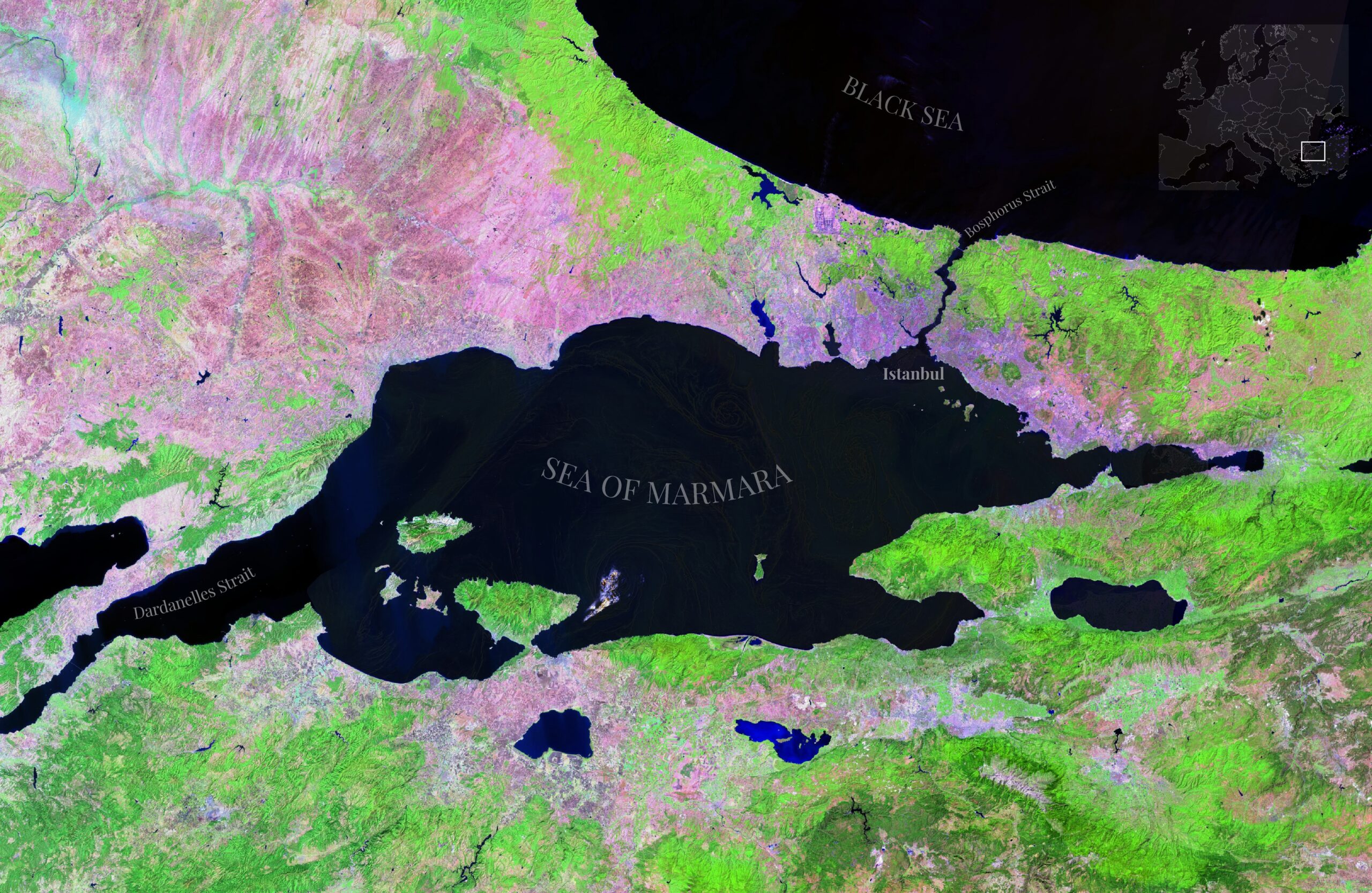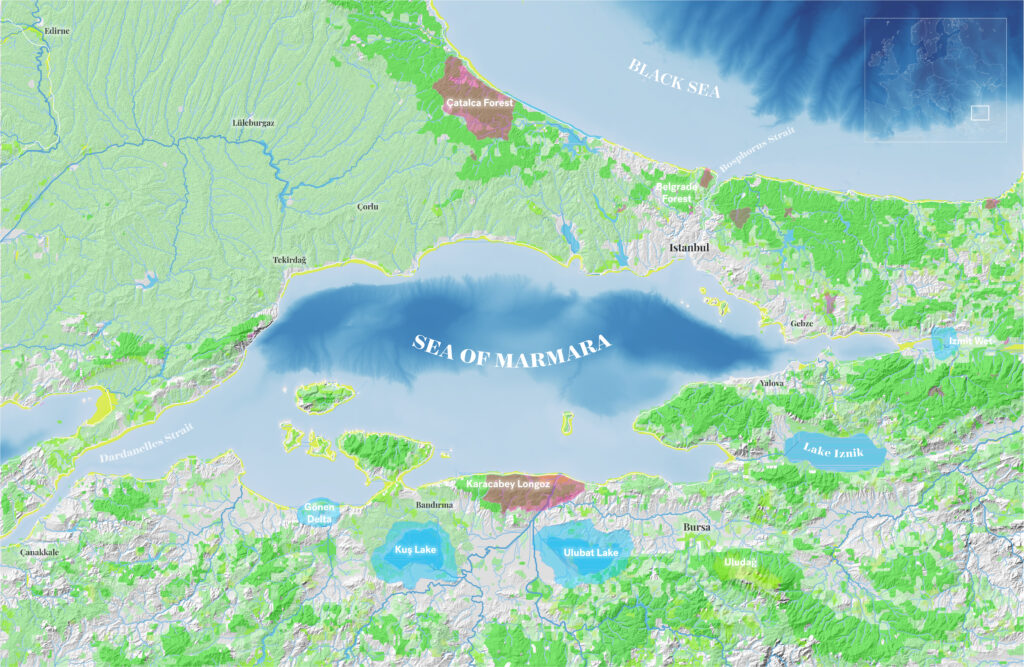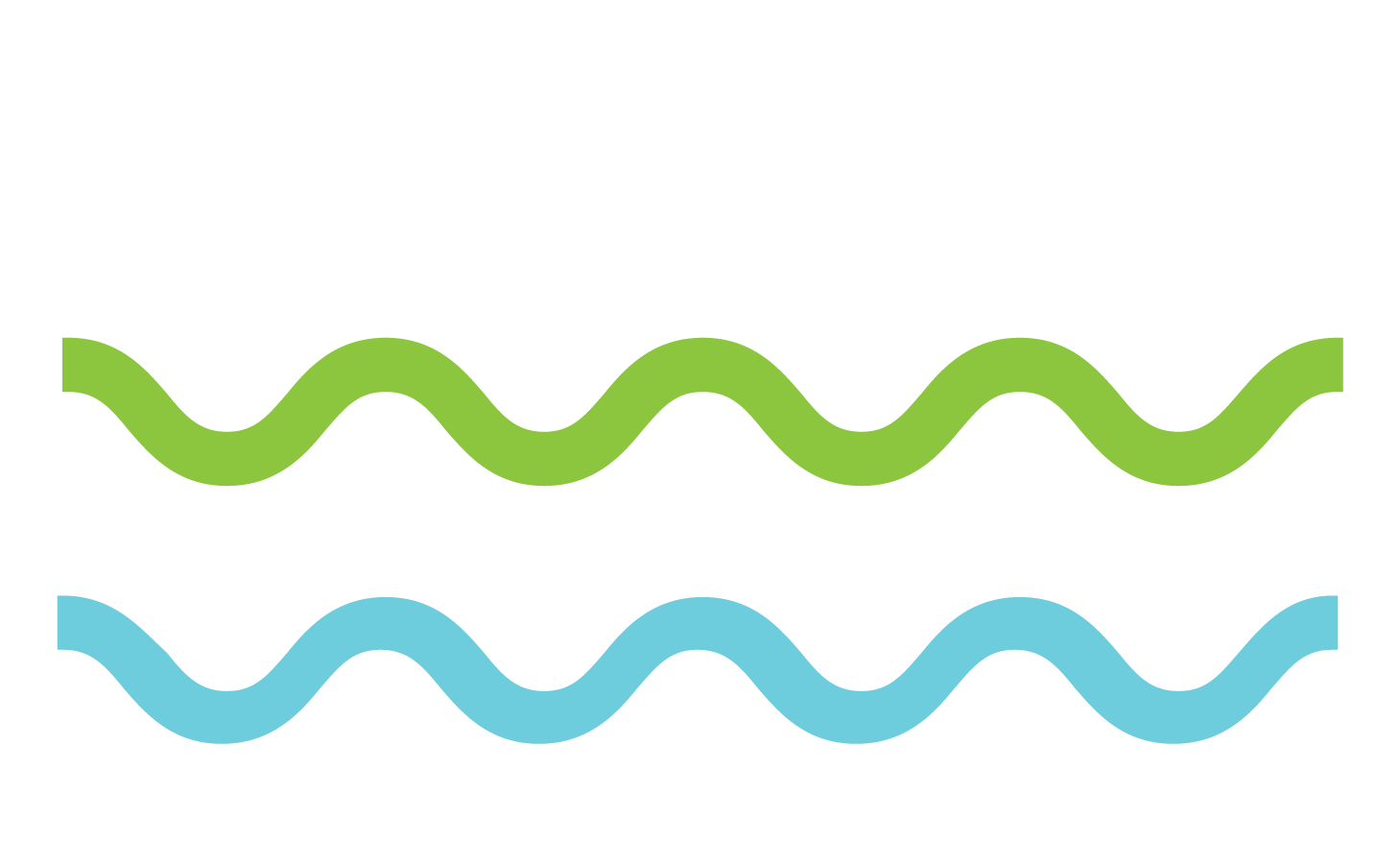Heavily urbanized areas of the world, like the Istanbul metropolitan area and the Sea of Marmara, have become low-oxygen or hypoxic zones due to the pressures of urbanization, runoff and nutrient loads in coastal areas. In the summer of 2021, the Sea of Marmara’s coastline was covered in a thick layer of mucilage for more than six months. Pollution, warmer temperatures, and stagnant water led to an unprecedented proliferation of phytoplankton, whose mucus settled on the sea bed, killing many endemic coral, seagrass and shellfish species.
In a growing metropolitan area where development pressures can outweigh conservation efforts, a ctively restoring coastal habitats and implementing nature-based infrastructure is a challenge. Given sea level rise projections for mid-century and end of century, nature-based solutions are also critical for creating resilient and dynamic coastlines that can help communities adapt. Through this project supported by National Geographic Society, we are developing an evidence-based, inclusive research process to support coastal restoration planning, with a goal of preserving and restoring at least 30% of the coastline and the watershed, in the Sea of Marmara working with communities and scientists on the ground to map the unmapped in contexts where geospatial data is limited or not accessible by the public.

Achieving a 30% preservation and restoration target for a region as large as the Marmara Sea Watershed is a substantial undertaking, but with a multidisciplinary approach, strong community involvement, scientific rigor, and collaboration with various stakeholders, it is possible to restore and protect these ecosystems under pressure of rapid urbanization.
- Community Engagement: Involve local communities in the restoration process from the beginning. Their knowledge of the area is invaluable, and their support and active participation are essential for the long-term success of any restoration project.
- Scientific Research: Continue to collaborate closely with scientists to gather and analyze data. This research should focus on understanding the current state of the ecosystem, identifying critical habitats, and assessing the impact of urbanization and industrialization on the region.
- Mapping and Geospatial Data: Invest in comprehensive mapping efforts, especially in areas where geospatial data is limited. Utilize remote sensing technologies, satellite imagery, and drone technology to map the unmapped areas accurately.
- Legislation and Regulation: Advocate for and work with policymakers to establish or strengthen regulations that protect coastal and watershed areas. Implement zoning and conservation measures to control development in vulnerable zones.
- Marine Protected Areas (MPAs): Identify and designate MPAs within the Sea of Marmara. These areas can serve as sanctuaries for marine life and help preserve biodiversity.
- Education and Awareness: Raise public awareness about the importance of coastal and watershed conservation. Implement educational programs in schools and within local communities to foster a sense of stewardship.
- Nature-Based Solutions: Explore and implement nature-based solutions for restoration. This could include the restoration of wetlands, dunes, and other natural coastal features that provide habitat and help protect against erosion and storm surges.
- International Collaboration: Seek collaboration with international organizations and experts who have experience in similar restoration efforts. Learning from successful projects elsewhere can provide valuable insights.
- Monitoring and Adaptive Management: Develop a robust monitoring system to track progress and adapt strategies as needed. Ecosystems are dynamic, and adaptive management ensures that conservation efforts remain effective over time. Encourage sustainable land use practices in coastal areas. Promote responsible tourism and eco-friendly development that respects the natural environment.
- Funding and Grants: Seek funding from governmental agencies, non-profit organizations, and international grants to support your restoration initiatives. Sustainable financing is crucial for long-term success. Explore partnerships with private companies that have an interest in environmental conservation.

Map of Critical Habitats and Ecosystems (areas in red are the only natural areas preserved under zoning laws and local regulations)
